Antique General Joseph E Johnston Lithograph Civil War Confederate Officer

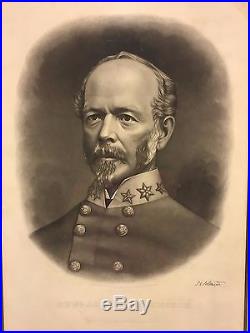
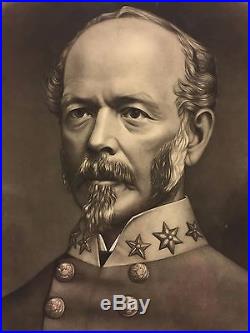
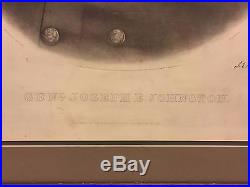

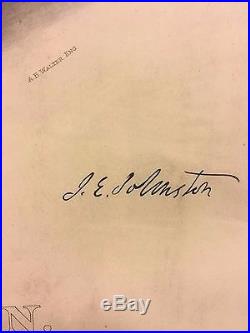
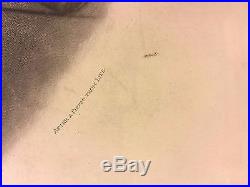
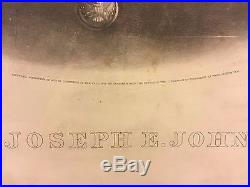

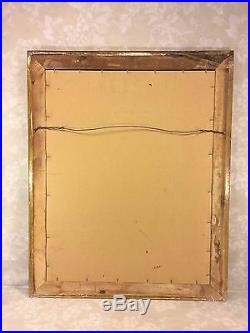
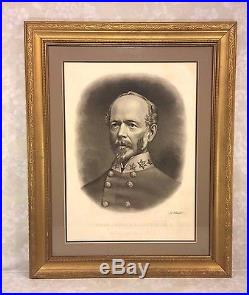
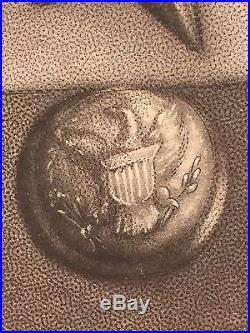

Antique General Joseph Johnston Lithograph Civil War Confederate Officer Eng A B Walter Publ by Bostwick 1872. Would make a great gift or keep it for yourself. We have not been able to find this lithograph available in any other online venues. Beautiful piece issued in 1872.
Was done from a real life photograph and then made into an engraving by A B Walter. The lithograph is entitled, "Gen Joseph E Johnston". Johnston was a Confederate General during the US Civil War and was the one General Lee was trying to link up his forces with in the break out from Richmond in April 1865. This lithograph of Johnston was published by Bostwick of Cincinati, OH in 1872. Some waviness to the lithograph in the lower left corner.
Do not see any tears, foxing or brown spotting to report. Not sure if spot under L in Genl or the right corner are a watermark just browning from age. The part where it says publisher City is worn away most likely from sun exposure over the years.
The piece is signed, but we do not think it is a facsimile signature done with the lithograph originally. We also do not think it is an authentic signature by the General whom lived until 1892. Some dealer over the years probably put on there themselves.
The "H"s and open "O"s look close to a real signature by the General, but the "J"s look nothing like ones we have looked at that are on file and available online. But hey, we have been wrong before.
You be the judge before acquiring. The piece is in a beautifully done gold gilt colored wood frame with great detailing and raised beading. Gold colored beading on the inside of the frame. Nice looking gray matting and then a blue/gray matting that makes contact with the lithograph. The glass is intact, no cracking or blistering.The Framed Lithograph is 31.75 tall, by 25.5" across, by 1" wide. The lithograph within the frame is 22.75" tall by 16" across. Let us know if you have any questions or need additional pictures. Dont be shy to make an offer, we are always open to reasonable suggestions. The pictures provided both complement and supplement the listing description, so please look at them very closely as well.
With old items, there is no way one can capture all the little imperfections in words, so the two media are meant to be the full description. Make sure that this item meets your needs and requirements before deciding to acquire it. So, please carefully review all the attached pictures.Ask all the questions you have, come see in person or send a friend to see the item on your behalf, prior to deciding to acquire it. Some information about this famous Civil War General from our friends at Wikipedia. Johnston during the American Civil War. March 4, 1879 March 3, 1881. March 21, 1891 (aged 84) Washington, D.
Joseph Eggleston Johnston (February 3, 1807 March 21, 1891) was a career U. Officer, serving with distinction in the Mexican-American War. And was also one of the most senior general officers.
In the Confederate States Army. During the American Civil War.
He was unrelated to Albert Sidney Johnston. Another high-ranking Confederate general during the Civil war. Johnston was trained as a civil engineer at the U. Graduating in the same class as Robert E.He served in Florida, Texas, and Kansas. And fought with distinction in the Mexican-American War. And by 1860 achieved the rank of brigadier general. When his native state of Virginia declared secession from the Union, Johnston resigned his U.
Commission and became the highest-ranking U. Officer to join the Confederacy. To his dismay, however, he was appointed only the fourth ranking full general. Johnston's effectiveness in the American Civil War was undercut by tensions with Confederate president Jefferson Davis.
Who often criticized him for a lack of aggressiveness, and victory eluded him in most campaigns he personally commanded. However, he was the senior Confederate commander at the First Battle of Bull Run. In 1861, and his recognition of the important necessary actions, and prompt application of leadership in that victory is usually credited to his subordinate, P. He defended the Confederate capital of Richmond, Virginia. During the 1862 Peninsula Campaign.Withdrawing under the pressure of a superior force under Union. In his only offensive action during the campaign, he suffered a severe wound at the Battle of Seven Pines. After which he was replaced in command by his classmate at West Point, Robert E.
In 1863, in command of the Department of the West. He was criticized for his actions and failures. In 1864, he fought against Union Maj.
But was relieved of command after withdrawing from northwest Georgia to the outskirts of the city. And surrendered his armies to Sherman at Bennett Place. Near Durham Station, North Carolina on April 26, 1865.
Two of his major opponents, General Ulysses S. And Sherman, made comments highly respectful of his actions in the war, and they became close friends with Johnston in subsequent years. He served a term in Congress.And was commissioner of railroads under Grover Cleveland. He died of pneumonia after serving in inclement weather as a pallbearer at the funeral of his former adversary, and later friend, William T. Johnston was born at Longwood House in "Cherry Grove", near Farmville, Virginia. Longwood House later burned down. Was the birthplace in 1827 of Charles S.
An officer on the staff of Robert E. And is now the home of the president of Longwood University.
His grandfather, Peter Johnston, emigrated to Virginia from Scotland in 1726. Joseph was the seventh son of Judge Peter Johnston (17631831) and Mary Valentine Wood (17691825), a niece of Patrick Henry. He was named for Major Joseph Eggleston.
Under whom his father served in the American Revolutionary War. In the command of Light-Horse Harry Lee.His brother Charles Clement Johnston. And his nephew John Warfield Johnston. In 1811, the Johnston family moved to Abingdon, Virginia.
A town near the Tennessee border, where Peter built a home he named Panecillo. Johnston attended the United States Military Academy. While he was Secretary of War. Days before he was inaugurated as vice president. He was moderately successful at academics and received only a small number of disciplinary demerits.
He graduated in 1829, ranking 13th of 46 cadets, and was appointed a second lieutenant. He would become the first West Point graduate to be promoted to a general officer in the regular army. Reaching a higher rank in the U.
Army than did his 1829 classmate, Robert E. Johnston resigned from the Army in March 1837 and studied civil engineering. During the Second Seminole War. On January 12, 1838, at Jupiter, Florida.
The sailors who had gone ashore were attacked and Johnston was to claim there were "no less than 30 bullet holes" in his clothing and one bullet creased his scalp, leaving a scar he had for the rest of his life. Having encountered more combat activities in Florida as a civilian than he had had previously as an artillery officer, Johnston decided to rejoin the Army. He departed for Washington, D.
In April 1838 and was appointed a first lieutenant. Of topographic engineers on July 7; on that same day, he received a brevet.
For the actions at Jupiter Inlet and his explorations of the Florida Everglades. On July 10, 1845, in Baltimore, Johnston married Lydia Mulligan Sims McLane (18221887), the daughter of Louis McLane.The president of the Baltimore and Ohio Railroad. And a prominent former politician congressman.
And a member of President. Johnston was enthusiastic about the outbreak of the Mexican-American War. He served on the staff of Lt. In the Siege of Veracruz. Having been chosen by Scott to be the officer carrying the demand for surrender beforehand to the provincial governor. He was in the vanguard of the movement inland under Brig. And was severely wounded by grapeshot performing reconnaissance prior to the Battle of Cerro Gordo.He was appointed a brevet lieutenant colonel. For his actions at Cerro Gordo. After recovering in a field hospital, he rejoined the army at Puebla. During the advance toward Mexico City, he was second in command of the U. , a unit composed of light infantry or skirmishers.
He distinguished himself at Contreras. Was wounded again at Chapultepec. And received two brevet promotions for the latter two engagements, ending the war as a brevet colonel.
After the end of hostilities, he reverted to his peacetime rank of captain in the topographical engineers. Winfield Scott remarked humorously that Johnston is a great soldier, but he had an unfortunate knack of getting himself shot in nearly every engagement. Despite his wounds, however, Johnston's greatest anguish during the war was the death of his nephew, Preston Johnston. Lee informed Johnston that Preston had been killed by a Mexican artillery shell at Contreras, both officers wept, and Johnston grieved for the remainder of his life.Secretary of War Jefferson Davis. An acquaintance of Johnston's from West Point, rebuffed these suggestions, a practice that he would continue during the Civil War, much to Johnston's irritation. Despite this disagreement, Davis thought enough of Johnston to appoint him lieutenant colonel in one of the newly formed regiments, the 1st U.
At this same time, Robert E. Lee was appointed lieutenant colonel of the 2nd U. In this role, Johnston participated in actions against the Sioux. And in the violence known as Bleeding Kansas. He developed a mentor relationship and close friendship with one of his junior officers, Capt. Who would become one of his principal opponents during the Civil War. In the fall of 1856, Johnston was transferred to a depot for new recruits at Jefferson Barracks, Missouri. In 1857 he led surveying expeditions to determine the Kansas border.Later that year, a new Secretary of War replaced Jefferson Davis John B. A native of Abingdon, a cousin of Johnston's by marriage, and former guardian of Preston Johnston. Floyd overturned Davis's previous decision about Johnston's highest brevet rank and he was listed as a brevet colonel for Cerro Gordo, an action that caused grumbling within the Army about favoritism. In 1859, President James Buchanan.
Named Johnston's brother-in-law, Robert McLane, as minister to Mexico. And Johnston accompanied him on a journey to visit Benito Juárez. S government in Veracruz, ordered to inspect possible military routes across the country in case of further hostilities. Army, died on June 10, 1860. Winfield Scott was responsible for naming a replacement, but instead of one name, he offered four possibilities: Albert Sidney Johnston, Joseph E. Johnston (no relation), Robert E. Although Jefferson Davis, now a member of the Senate Military Affairs Committee, favored Albert Sidney Johnston, Secretary of War Floyd chose Joseph E.Johnston was promoted to brigadier general. Johnston did not enjoy the position, preferring field command to paperwork in Washington. In addition, he suffered from the pressures of the imminent sectional crisis and the ethical dilemma of administering war matériel that might prove useful to his native South; he did not yield to temptation, however, as Secretary of War Floyd was accused of doing. Portrait by Benjamin Franklin Reinhart.
Manassas and first friction with President Davis. When his native state, Virginia seceded.
In 1861, Johnston resigned his commission as a brigadier general in the regular army. Army officer to do so. He was initially commissioned as a major general. On May 4, but the Virginia Convention decided two weeks later that only one major general was required in the state army and Robert E.Johnston was then offered a state commission as a brigadier general, which he declined, accepting instead a commission as a brigadier general. Johnston relieved Colonel Thomas J.
Of command at Harpers Ferry. In May and organized the Army of the Shenandoah.
In the First Battle of Bull Run. (First Manassas), July 21, 1861, Johnston rapidly moved his small army from the Shenandoah Valley. To reinforce that of Brig. But he lacked familiarity with the terrain and ceded tactical planning of the battle to the more junior Beauregard as a professional courtesy. At midday, while Beauregard was still unclear about the direction his Union opponent was taking in the battle, Johnston decided that the critical point was to the north of his headquarters (the Lewis house, "Portici"), at Henry House Hill.He abruptly announced The battle is there. Beauregard and the staffs of both generals followed his lead and rode off. Johnston encountered a scattered unit, the 4th Alabama, all of whose field grade officers had been killed, and personally rallied the men to reinforce the Confederate line.
He consoled the despairing Brig. And urged him to lead his men back into the fight. General Bee's exhortation to his men was the inspiration for Stonewall Jackson's nickname. Beauregard then convinced Johnston that he would be more valuable organizing the arrival of reinforcements for the remainder of the battle than providing at-the-front tactical leadership.
Although Beauregard managed to claim the majority of public credit, Johnston's behind-the-scenes role was a critical factor in the Southern victory. After Bull Run, Johnston assisted Beauregard and William Porcher Miles. In the design and production of the Confederate Battle Flag.
It was Johnston's idea to make the flag square. It [the ranking of senior generals] seeks to tarnish my fair fame as a soldier and a man, earned by more than thirty years of laborious and perilous service. I had but this, the scars of many wounds, all honestly taken in my front and in the front of battle, and my father's Revolutionary sword. It was delivered to me from his venerated hand, without a stain of dishonor. Its blade is still unblemished as when it passed from his hand to mine.
I drew it in the war, not for rank or fame, but to defend the sacred soil, the homes and hearths, the women and children; aye, and the men of my mother Virginia, my native South. Johnston's letter to Jefferson Davis, September 12, 1861. In August, Johnston was promoted to full general.What is called a four-star general in the modern U. Armybut was not pleased that three other men he had outranked in the "old Army" now outranked him, even though Davis backdated his promotion to July 4.
Johnston felt that since he was the senior officer to leave the U. Army and join the Confederacy he should not be ranked behind Samuel Cooper. Albert Sidney Johnston, and Robert E.
Only Beauregard was placed behind Johnston on the list of five new generals. This led to much bad blood between Johnston and Jefferson Davis, which would last throughout the war. The crux of Davis's counterargument was that Johnston's U. Commission as a brigadier general was as a staff officer and that his highest line commission was as a lieutenant colonel; both Sidney Johnston and Lee had been full colonels.
Johnston sent an intemperately worded letter to Davis, who was offended enough to discuss its tone with his cabinet. Johnston was placed in command of the Department of the Potomac and the Confederate Army of the Potomac. On July 21, 1861, and the Department of Northern Virginia on October 22. From July to November 1861, he was headquartered at the Conner House. The winter of 186162 was relatively quiet for Johnston in his Centreville.Headquarters, concerned primarily with organization and equipment issues, as the principal Northern army, also named Army of the Potomac. Was being organized by George B. McClellan perceived Johnston's army as overwhelmingly strong in its fortifications, which prompted the Union general to plan an amphibious movement around Johnston's flank.
In early March, learning of Union offensive preparations, Johnston withdrew his army to Culpeper Court House. This movement had repercussions on both sides. President Davis was surprised and disappointed by the unannounced move, which he considered a precipitate retreat. At about this time, Davis moved to restrict Johnston's authority by bringing Robert E. Lee to Richmond as his military adviser and began issuing direct orders to some of the forces under Johnston's ostensible command.On the Northern side, McClellan was publicly embarrassed when it was revealed that the Confederate position had not been nearly as strong as he had portrayed. But more importantly, it required him to replan his spring offensive, and instead of an amphibious landing at his preferred target of Urbanna.
He chose the Virginia Peninsula. Between the James and York Rivers, as his avenue of approach toward Richmond. Map of the Peninsula Campaign. Up to the Battle of Seven Pines.In early April 1862, McClellan, having landed his troops at Fort Monroe. At the tip of the Virginia Peninsula, began to move slowly toward Yorktown.
Johnston's plan for the defense of the Confederate capital was controversial. Knowing that his army was half the size of McClellan's and that the Union Navy could provide direct support to McClellan from either river, Johnston attempted to convince Davis and Lee that the best course would be to concentrate in fortifications around Richmond. He was unsuccessful in persuading them and deployed most of his force on the Peninsula. Preparations by McClellan at Yorktown, Johnston withdrew and fought a sharp defensive fight at Williamsburg.
(May 5) and turned back an attempt at an amphibious turning movement at Eltham's Landing. By late May the Union army was within six miles of Richmond. Realizing that he could not defend Richmond forever from the Union's overwhelming numbers and heavy siege artillery and that McClellan's army was divided by the rain-swollen Chickahominy River.
Johnston attacked south of the river on May 31 in the Battle of Seven Pines. His plan was aggressive, but too complicated for his subordinates to execute correctly, and he failed to ensure they understood his orders in detail or to supervise them closely. The battle was tactically inconclusive, but it stopped McClellan's advance on the city and would turn out to be the high-water mark of his invasion. More significant, however, was that Johnston was wounded by an artillery shell on the second day of the battle, hit in his right shoulder and chest. This led to Davis turning over command to the more aggressive Robert E.
Lee, who would lead the Army of Northern Virginia. For the rest of the war. Lee began by driving McClellan from the Peninsula during the Seven Days Battles. Of late June and beating a Union army a second time near Bull Run in August. After recovering from his wounds, on November 24, 1862, Johnston was appointed to command the Department of the West. (aka Army of the West) the principal command of the Western Theater. Which gave him titular control of Gen. The other major force in this area was the Trans-Mississippi Department, commanded by Lt. Johnston argued throughout his tenure that Holmes's command should be combined with Pemberton's under Johnston's control, or at least to reinforce Pemberton with troops from Holmes's command, but he was unable to convince the government to take either of these steps. The first issue facing Johnston in the West was the fate of Braxton Bragg. The Confederate government was displeased with Bragg's performance at the Battle of Stones River. As were many of Bragg's senior subordinates.Jefferson Davis ordered Johnston to visit Bragg and determine whether he should be replaced. Johnston realized that if he recommended Bragg's replacement, he would be the logical choice to succeed him, and he considered that a field army command was more desirable than his current, mostly administrative post, but his sense of honor prevented him from achieving this personal gain at Bragg's expense.
After interviewing Bragg and a number of his subordinates, he produced a generally positive report and refused to relieve the army commander. Davis ordered Bragg to a meeting in Richmond and designated Johnston to take command in the field, but Bragg's wife was ill and he was unable to travel.
Furthermore, in early April Johnston was forced to bed with lingering problems from his Peninsula wound, and the attention of the Confederates shifted from Tennessee to Mississippi, leaving Bragg in place. The major crisis facing Johnston was defending Confederate control of Vicksburg, Mississippi. Which was threatened by Union Maj. First in a series of unsuccessful maneuvers during the winter of 186263 to the north of the fortress city, but followed in April 1863 with an ambitious campaign that began with Grant's Union army crossing the Mississippi River.
Pemberton by surprise, the Union army waged a series of successful battles as it moved northeast toward the state capital of Jackson. On May 9, the Confederate Secretary of War directed Johnston to proceed at once to Mississippi and take chief command of the forces in the field.
Johnston informed Richmond that he was still medically unfit, but would obey the order. When he arrived in Jackson on May 13 from Middle Tennessee, he learned that two Union army corps were advancing on the city and that there were only about 6,000 troops available to defend it. Johnston ordered a fighting evacuation the Battle of Jackson. May 14 and retreated with his force to the north.
Grant captured the city and then faced to the west to approach Vicksburg. Johnston began to move his force west to join Pemberton when he heard of that general's defeat at Champion Hill.
(May 16) and Big Black River Bridge. The survivors retreated to the fortifications of Vicksburg. Johnston urged Pemberton to avoid being surrounded by abandoning the city and to join forces with Johnston's troops, outnumbering Grant, but Davis had ordered Pemberton to defend the city as his highest priority. Grant launched two unsuccessful assaults against the fortifications and then settled in for a siege.The soldiers and civilians in the surrounded city waited in vain for Johnston's small force to come to their rescue. By late May Johnston had accumulated about 24,000 men but wanted additional reinforcements before moving forward. He considered ordering Bragg to send these reinforcements, but was concerned that this could result in the loss of Tennessee. He also bickered with President Davis about whether the order sending him to Mississippi could be construed as removing him from theater command; Steven E.
Woodworth judges that Johnston "willfully misconstrued" his orders out of resentment of Davis's interference. Pemberton's army surrendered on July 4, 1863. Along with the capture of Port Hudson. A week later, the loss of Vicksburg gave the Union complete control of the Mississippi River and cut the Confederacy in two. President Davis wryly ascribed the strategic defeat to a want of provisions inside and a general outside [Johnston] who would not fight.The relationship between Johnston and Davis, difficult since the early days of the war, became bitter as recriminations were traded publicly about who was to blame for Vicksburg. Davis considered firing Johnston, but he remained a popular officer and had many political allies in Richmond, most notably Sen. Instead, Bragg's army was removed from Johnston's command, leaving him in control of only Alabama and Mississippi. His hatred of Jeff Davis amounts to a religion. With him it colors all things.
While Vicksburg was falling, Union Maj. Was advancing against Bragg in Tennessee, forcing him to evacuate Chattanooga. Bragg achieved a significant victory against Rosecrans in the Battle of Chickamauga. (September 1920), but he was defeated by Ulysses S. Grant in the Battles for Chattanooga.
Davis offered the position to William J. The senior corps commander, who refused it. Beauregard, another general with whom he had poor personal relations, and also Robert E.Lee, who was reluctant to leave Virginia, first recommended Beauregard, but sensing Davis's discomfort, changed his recommendation to Johnston. After much agonizing, Davis appointed Johnston to command the Army of Tennessee in Dalton, Georgia, on December 27, 1863. The Atlanta Campaign from Dalton to Kennesaw Mountain.
S advance from Chattanooga to Atlanta. In the spring of 1864, Johnston conducted a series of withdrawals that appeared similar to his Peninsula Campaign strategy.
He repeatedly prepared strong defensive positions, only to see Sherman maneuver around them in expert turning movements. Causing him to fall back in the general direction of Atlanta. Johnston saw the preservation of his army as the most important consideration, and hence conducted a very cautious campaign. He handled his army well, slowing the Union advance and inflicting heavier losses than he sustained. Sherman began his Atlanta Campaign.Johnston's Army of Tennessee fought defensive battles against the Federals at the approaches to Dalton. Which was evacuated on May 13, then retreated 12 miles south to Resaca, and constructed defensive positions. However, after a brief battle. Johnston again yielded to Sherman, and retreated from Resaca on May 15.
Johnston assembled the Confederate forces for an attack at Cassville. As his troops advanced, an enemy force of unknown strength appeared unexpectedly on his right flank. A skirmish ensued, forcing the corps commander, Lt. To halt his advance and reposition his troops to face the threat. Faced with this unexpected threat, Johnston abandoned his attack and renewed his retreat.
On May 20 they again retreated 8 miles further south to Cartersville. The month of May 1864 ended with Sherman's forces attempting to move away from their railroad supply line with another turning movement, but became bogged down by the Confederates' fierce defenses at the Battle of New Hope Church. On May 25, the Battle of Pickett's Mill.
On May 27, and the Battle of Dallas. In June Sherman's forces continued maneuvers around the northern approaches to Atlanta, and a battle ensued at Kolb's Farm. On June 22, followed by Sherman's first (and only) attempt at a massive frontal assault in the Battle of Kennesaw Mountain.
On June 27, which Johnston strongly repulsed. However, by this time Federal forces were within 17 miles of Atlanta, threatening the city from the west and north. Johnston had yielded over 110 miles of mountainous, and thus more easily defensible, territory in just two months, while the Confederate government became increasingly frustrated and alarmed. When Johnston retreated across the Chattahoochee River.
The final major barrier before Atlanta, President Davis lost his patience. In early July Davis sent Gen. To Atlanta to assess the situation. Davis removed Johnston from command on July 17, 1864, just outside Atlanta. The fate of Atlanta, from the Confederate standpoint, was all but decided by Johnston.
Hood, was left with the "virtually impossible situation" of defending Atlanta. Which he was forced to abandon in September. Davis's decision to remove Johnston was one of the most controversial of the war. North Carolina and surrender at Bennett Place. Johnston traveled to Columbia, South Carolina.
To begin a virtual retirement. However, as the Confederacy became increasingly concerned about Sherman's March to the Sea. Across Georgia and then north through the Carolinas.
The public clamored for Johnston's return. The general in charge of the Western Theater, P. Was making little progress against the advancing Union force. Political opponents of Jefferson Davis, such as Sen. Added to the pressure in Congress. Diarist Mary Chesnut wrote, We thought this was a struggle for independence. Now it seems it is only a fight between Joe Johnston and Jeff Davis.In January 1865, the Congress passed a law authorizing Robert E. Lee the powers of general in chief, and recommending that Johnston be reinstated as the commander of the Army of Tennessee. Davis immediately appointed Lee to the position, but refused to restore Johnston. In a lengthy unpublished memo, Davis wrote, My opinion of General Johnston's unfitness for command has ripened slowly and against my inclinations into a conviction so settled that it would be impossible for me again to feel confidence in him as the commander of an army in the field.
And 17 senators petitioned Lee to use his new authority to appoint Johnston, bypassing Davis, but the general in chief declined. Instead, he recommended the appointment to Davis.Despite his serious misgivings, Davis restored Johnston to active duty on February 25, 1865. His new command comprised two military departments: the Department of South Carolina, Georgia, and Florida, and the Department of North Carolina and Southern Virginia; he assumed command of the latter department on March 6.
These commands included three Confederate field armies, including the remnants of the once formidable Army of Tennessee, but they were armies in name only. The Tennessee army had been severely depleted at Franklin and Nashville, lacked sufficient supplies and ammunition, and the men had not been paid for months; only about 6,600 traveled to South Carolina.
Johnston also had available 12,000 men under William J. Who had been unsuccessfully attempting to resist Sherman's advance, Braxton Bragg. S force in Wilmington, North Carolina. And 6,000 cavalrymen under Wade Hampton. Johnston, severely outnumbered, hoped to combine his force with a detachment of Robert E.Lee's army from Virginia, jointly defeat Sherman, and then return to Virginia for an attack on Ulysses S. Lee initially refused to cooperate with this plan. Following the fall of Richmond in April, Lee attempted to escape to North Carolina to join Johnston, but it was too late. Recognizing that Sherman was moving quickly, Johnston then planned to consolidate his own small armies so that he could land a blow against an isolated portion of Sherman's army, which was advancing in two separated columns.
On March 19, 1865, Johnston was able to catch the left wing of Sherman's army by surprise at the Battle of Bentonville. And briefly gained some tactical successes before superior numbers forced him to retreat to Raleigh, North Carolina.
Unable to secure the capital, Johnston's army withdrew to Greensboro. Joe Johnston - Currier & Ives lithograph.After learning of Lee's surrender at Appomattox Court House. On April 9, Johnston agreed to meet with General Sherman between the lines at a small farm known as Bennett Place.
Near present-day Durham, North Carolina. After three separate days (April 17, 18, and 26, 1865) of negotiations, Johnston surrendered the Army of Tennessee and all remaining Confederate forces still active in North Carolina, South Carolina, Georgia, and Florida. It was the largest surrender of the war, totaling 89,270 soldiers. President Davis considered that Johnston, surrendering so many troops that had not been explicitly defeated in battle, had committed an act of treachery. Johnston was paroled on May 2 at Greensboro. After the surrender, Sherman issued ten days' rations to the hungry Confederate soldiers, as well as horses and mules for them to insure a crop.He also ordered distribution of corn, meal, and flour to civilians throughout the South. This was an act of generosity that Johnston would never forget; he wrote to Sherman that his attitude reconciles me to what I have previously regarded as the misfortune of my life, that of having you to encounter in the field. Johnston statue in Dalton, Georgia, where he took command of the Army of Tennessee.
Johnston statue in Bentonville, North Carolina. After the war Johnston struggled to make a living for himself and his wife, who was ailing. He became president of a small railroad, the Alabama and Tennessee River Rail Road Company.
Which during his tenure of May 1866 to November 1867, was renamed the Selma, Rome and Dalton Railroad. Johnston was bored with the position and the company failed for lack of capital. The income from this venture allowed him to devote time to his great postwar activity, writing his memoirs.
His Narrative of Military Operations , published in 1874, was highly critical of Davis and many of his fellow generals, continuing his grievance about the unfairness of his ranking as a general and attempting to justify his career as a cautious campaigner. Although many Confederate generals were critical of Johnston, the memoirs of both Sherman and Grant put him in a favorable light. Sherman described him as a "dangerous and wily opponent" and criticized Johnston's nemeses, Hood and Davis.
Grant supported his decisions in the Vicksburg Campaign: Johnston evidently took in the situation, and wisely, I think, abstained from making an assault on us because it would simply have inflicted losses on both sides without accomplishing any result. " Commenting on the Atlanta Campaign, Grant wrote, "For my own part, I think that Johnston's tactics were right. Anything that could have prolonged the war a year beyond the time that it finally did close, would probably have exhausted the North to such an extent that they might then have abandoned the contest and agreed to a settlement. Johnston moved from Savannah to Richmond in the winter of 187677. He served in the 46th Congress. From 1879 to 1881 as a Democratic. Having been elected with 58.11% of the vote over Greenback William W. Newman; he was not a candidate for renomination in 1880. He was a commissioner of railroads in the administration of President Grover Cleveland.After his wife died in 1887, Johnston spent his remaining years traveling to veterans' gatherings, where he was universally cheered. He was an honorary member of the District of Columbia Society of the Sons of the American Revolution. And was assigned national membership number 1963. Johnston, like Lee, never forgot the magnanimity of the man to whom he surrendered, and would not allow an unkind word to be said about Sherman in his presence. Sherman and Johnston corresponded frequently and they met for friendly dinners in Washington whenever Johnston traveled there.
When Sherman died, Johnston served as an honorary pallbearer at his funeral; during the procession in New York City on February 19, 1891, he kept his hat off as a sign of respect in the cold, rainy weather. Someone with concern for the old general's health asked him to put on his hat, to which Johnston replied If I were in his place and he were standing here in mine, he would not put on his hat. He caught a cold that day, which developed into pneumonia.And he died several weeks later in Washington, D. He was buried next to his wife in Green Mount Cemetery. His personal papers are held by the Special Collections Research Center.
At the College of William & Mary. Please check out our other Timeless Tokens store listings as we are regularly adding new items. We specialize in vintage artwork, books, collectibles, furniture, musical instruments, paper ephemera, marine/nautical, and clocks/watches. Select countries (disclosed in individual item description). All items are as described, with any item history, known defects or imperfections disclosed in each listing.Welcome to Timeless Tokens, our online store, offering antiques, collectibles, and conventional merchandise for every need and occasion. Timeless Token represents the fulfillment of a long-held dream to create a business that allows us pursue our passion for finding unique collectibles and everyday items that can be shared with and appreciated by all. Our listings are updated regularly and focus on items that we know best - vintage artwork, books, clocks, collectibles, furniture, toys/model trains, musical instruments, and decorative boxes. We appreciate your taking the time to visit our store, and hope you will provide us feedback that will enable us to make your shopping experience the best it can be.
Referrals are an important part of our business. The item "Antique General Joseph E Johnston Lithograph Civil War Confederate Officer" is in sale since Friday, July 08, 2016.
This item is in the category "Collectibles\Militaria\Civil War (1861-65)\Other Civil War-Related Items". The seller is "hallboys321" and is located in Wilmington, Delaware.
This item can be shipped to United States, to Canada, to United Kingdom, DK, RO, SK, BG, CZ, FI, HU, LV, LT, MT, EE, to Australia, GR, PT, CY, SI, to Japan, to China, SE, KR, ID, to Taiwan, TH, to Belgium, to France, to Hong Kong, to Ireland, to Netherlands, PL, to Spain, to Italy, to Germany, to Austria, RU, IL, to Mexico, to New Zealand, SG, to Switzerland, NO, SA, UA, AE, QA, KW, BH, HR, MY, CL, CO, CR, PA, TT, GT, HN, JM.
- Country//Region of Manufacture: United States
- Country/Region of Manufacture: United States
- General Joseph Johnston: Civil War General Lithograph 1872
- Antique Civil War LIthograph: General Joseph Eggleston Johnston
